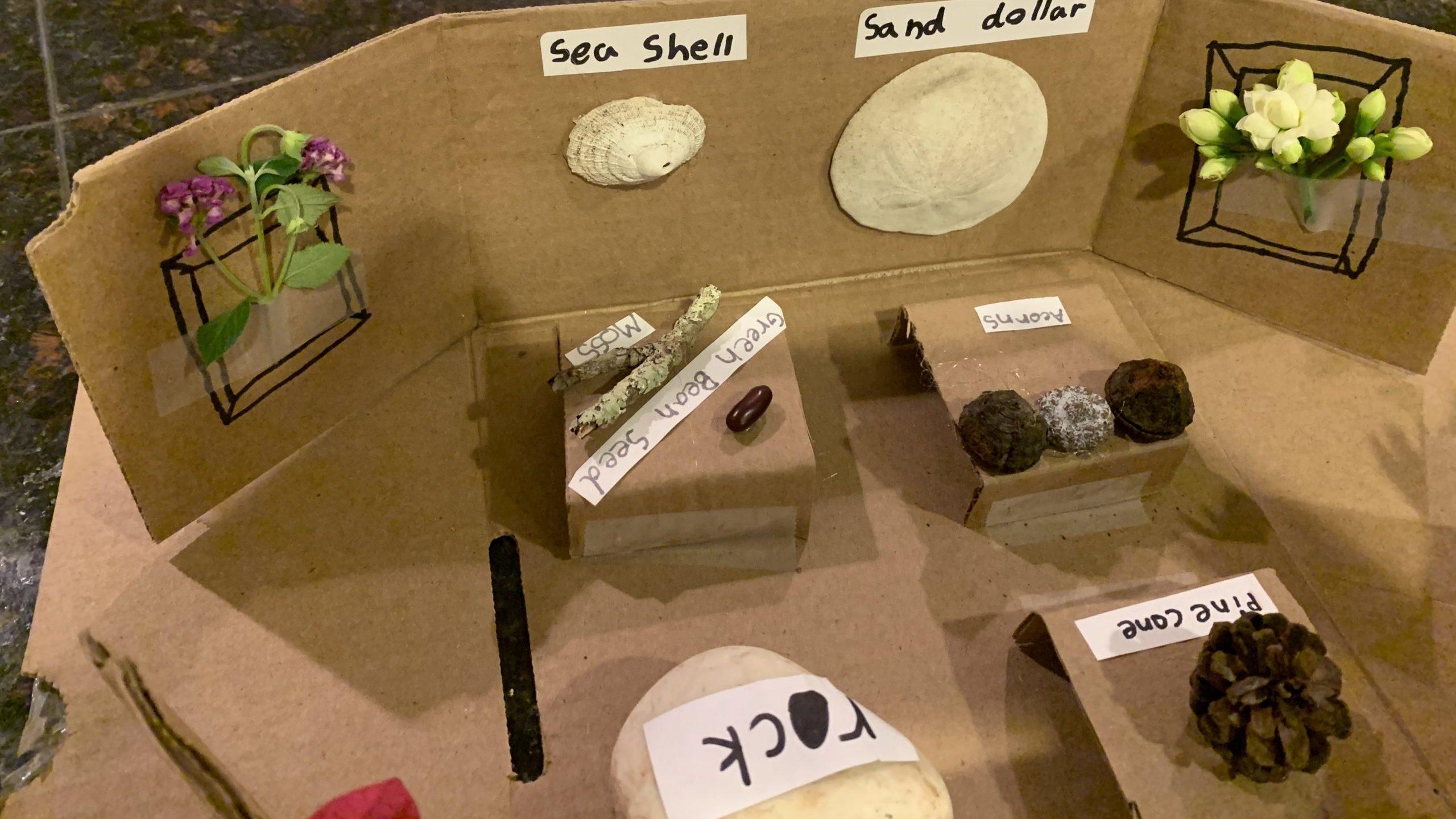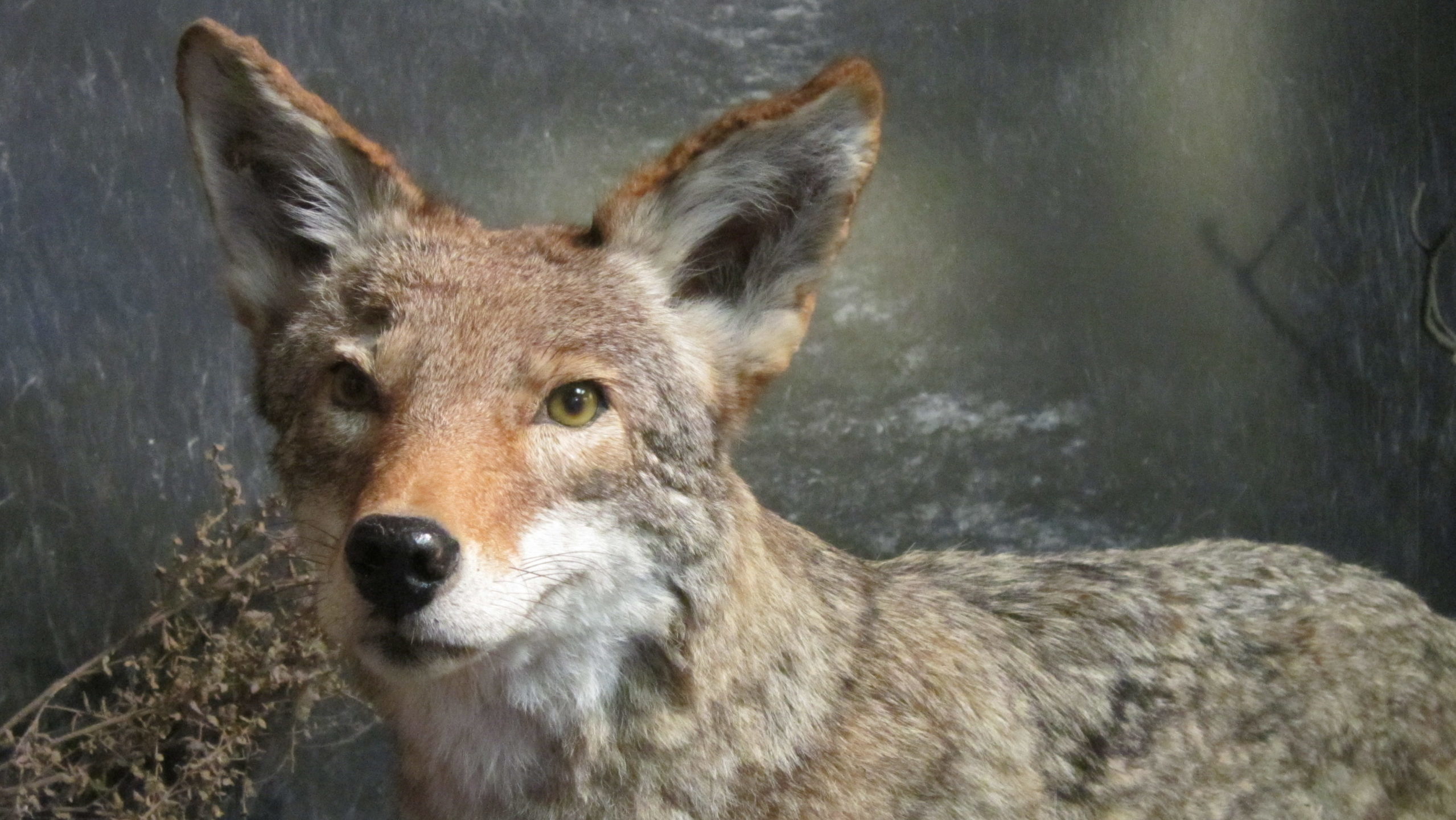What kind of thinking goes into the design of a natural history exhibit? Over the course of three lessons, students deepen their observation-making abilities, learn about how to properly collect natural specimens, and create their own miniature museum exhibit. This project-based sequence will teach students how to interpret their findings and distinguish natural objects from one another based on their physical properties.
Resources for Teachers
Activities, worksheets, videos, and more developed to support standards and formal learning.
Students view a presentation of the Santa Cruz Museum of Natural History’s exhibits, and think about how different specimens are interpreted.
Students collect different specimens from around their home or favorite outdoor place to explore.
Students create an exhibit that displays and interprets collected specimens, grouping them by shared characteristics.
Coyote Skull Activity | K-3 Grade
Coyotes are widely known as clever animals. Commonly heard, less commonly seen, and rarely surprised, coyotes are able to survive in all kinds of habitats thanks to their ability to eat lots of different foods.
Explore a coyote skull and learn about how these tricky creatures are able to adapt to eating different foods, and how teeth and skeletons can tell us a lot about how an animal survives!
Materials Provided:
Use this activity with our rentable coyote specimen! Learn more about kit and specimen rentals HERE.
Bird Beak Activity | 2nd grade
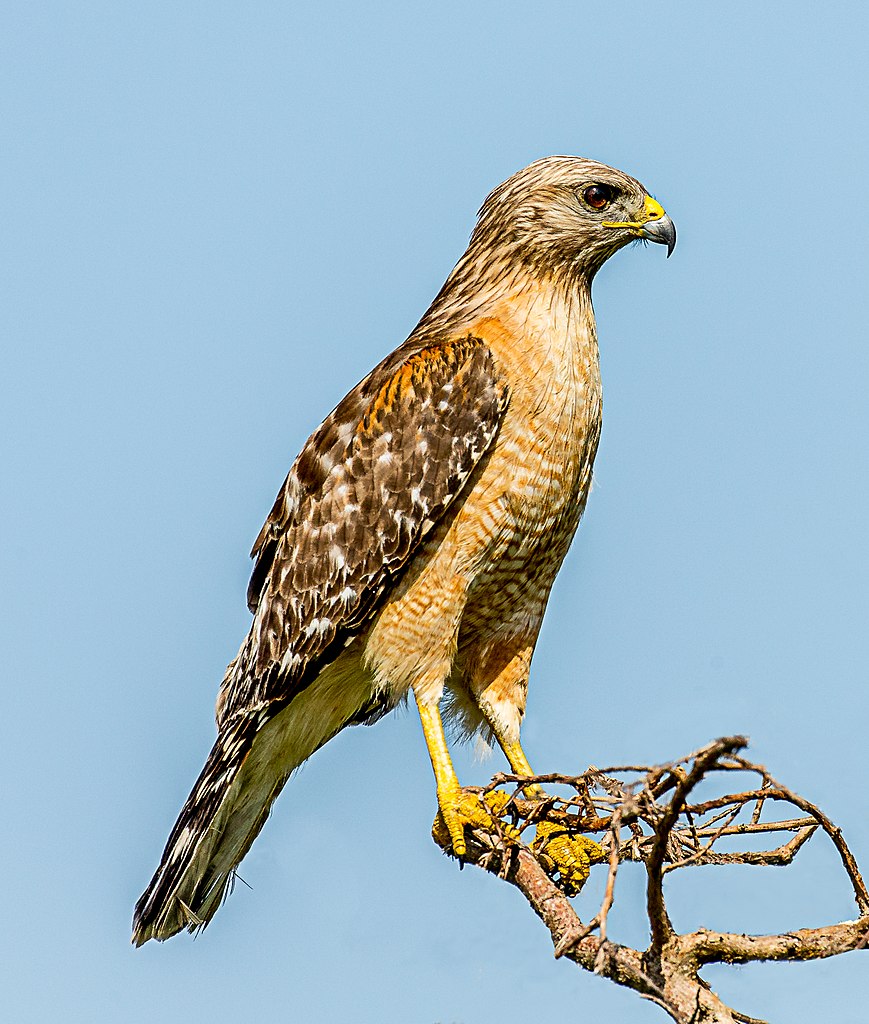
You can learn a lot about an animal just by making careful observations. If you want to know what an animal eats, a good place to start is by looking at the teeth. But what if they don’t have teeth? When looking at birds, it’s all about the beak! Different beaks can tell us quite a bit about what that particular bird eats.
Explore different bird species through this short presentation and figure out what they eat by making careful observations of their beak shape.The next time you go outside, try paying close attention to any birds you see – what does their beak look like? What are they eating? You might start to notice all kinds of interesting behaviors and adaptations!
Learn more about birds with the resources in our Online Museum Store.
Post by: Ellen
Animals in Their Habitat Activity | 2nd grade
What do animals need to survive? This short lesson explores that question and dives into the different kinds of places where animals can live, and how different animals can survive in their habitats. It’s up to you to use the clues to figure out which animals live nearby!
Learn more about mammals with these resources in our Online Museum Store.
Post by: Ellen
Plant Growth Observations Activity | 2nd Grade
What do plants need to grow and how do different seasons affect them? To answer these questions we need to pay close attention to the world around us and think about what changes each season brings.
Dive into the short slideshow below to explore what plants need to survive and grow, then go look around where you live and see what plants you can find! When you find some plants, you may wonder: Are they in sunny spots? How do they get water? Do you know the names of any plants?
Activity and resources:
Weather Observation Activity | 3rd grade
Careful observation and data collection are practices that all scientists and naturalists employ to aid in exploring and understanding the natural world. Weather provides a great way for students to practice both, as they watch from their window or take measurements outside. As students begin to detect patterns and notice differences in weather, questions emerge: how do clouds affect temperature? What about wind? Is what I’m seeing normal for this time of year? Diving into weather observations reveals a world of phenomena at play all around us every day.
This lesson is designed to run over the course of a week or more, requiring small time commitments of 5-10 minutes each day from individual students and then either group or self-reflection and analysis at the conclusion.
Materials:
Optional: Pair this lesson with our Cloud Observation Activity.
Post by: Spencer
Skull Detectives Activity | 2-3 grade
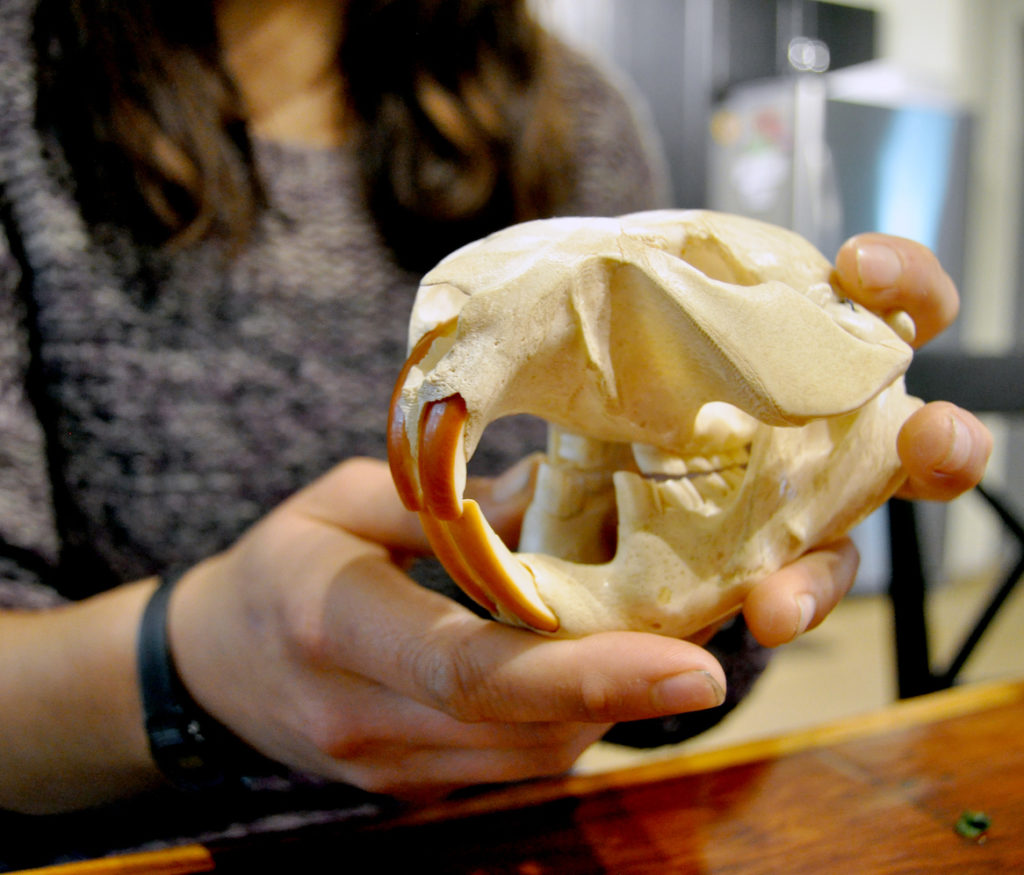
There’s a mystery that we need to solve. What do these animals eat? Observe three different native animal skulls and learn about different types of teeth to solve this mystery!
In this 30-40 minute activity, students will use a slideshow to guide them. Students will learn about the different types of teeth that animals have, and how teeth can be clues that help us figure out what an animal eats. Students will observe three different native animal skulls and make educated guesses about if they are a carnivore, herbivore, or omnivore. Based on their learning, they will draw one of the animals and label the different types of teeth.
This activity was adapted from the Our Animal Neighbors Program for distance learning and is for 2nd and 3rd graders. It can be used with younger grades, but students may need assistance with reading.
Materials provided:
Learn more about mammals with the resources in our Online Museum Store.
Post by: Elise
Ohlone Matching Game | 3-4 grade
Native people living along the Central California Coast practicing the Ohlone culture understood nature and responsibly stewarded resources for their survival. Do you know what it means to be a steward of nature? To be a steward is to take care of something. To be a steward of nature you first must understand nature and then you can learn how to care for it and preserve it for the future. In the past and today people have depended on natural resources to survive. Today we are going to learn about natural resources that were important to the Ohlone.
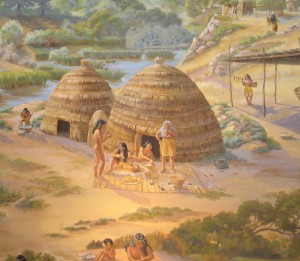
Matching Game
This 20- to 30-minute activity is for students to learn about natural resources that were important to the Ohlone culture and reflect on natural resources that we rely on today. Students will look at photos and read descriptions of natural resources and match the resource with the artifact they think came from it. Students will check their own answers by reading facts about the artifacts. This activity was adapted for distance learning from the Ohlone Classroom Kit and was created for 3rd/4th graders.
Materials:
Pick more resources about Native Californians in our Online Museum Store
Post by: Elise
Pollinator Matching Activity | 2nd grade
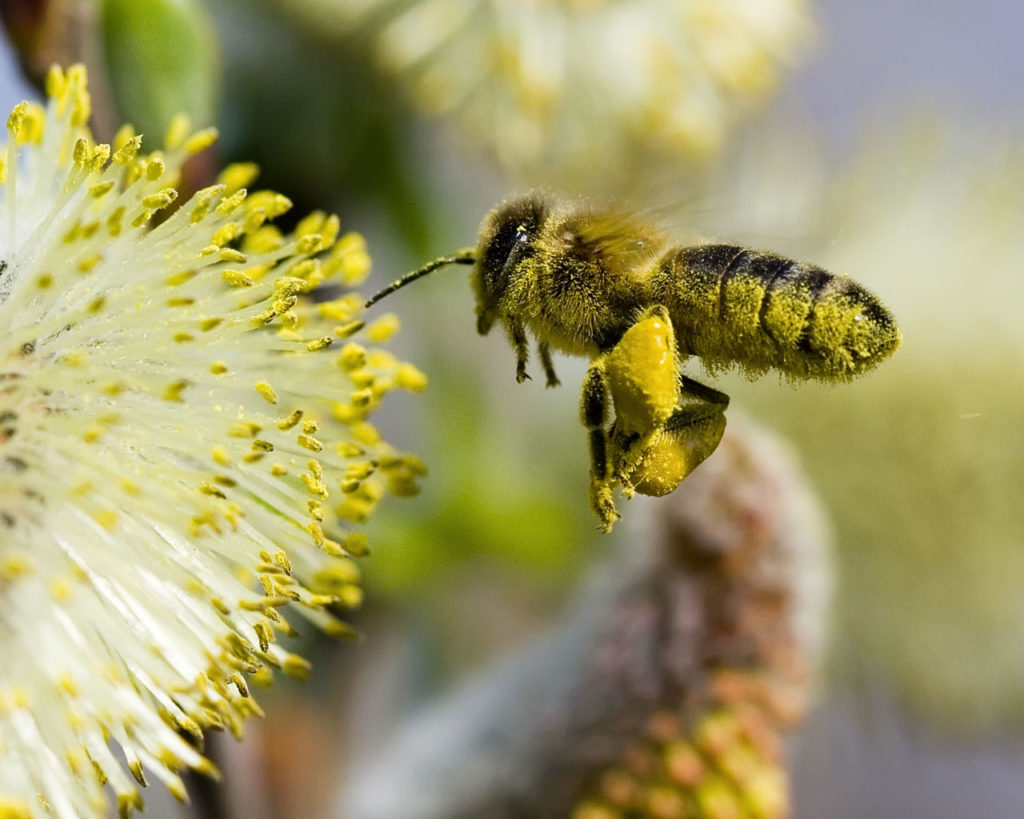
As we enjoy the blooms of spring, we have many creatures to thank. Show us what you already know about pollinators by playing a matching game! Then go on a scavenger hunt to continue learning about pollinators around your home.
Preparation:
- Print out Pollinator and Flower Sheets. Cut out cards. Fold each card at the middle line so one side shows the image and the other side shows the information. (you can tape, glue or staple so that it stays together).
- Print out Pollinator Scavenger Hunt Data Sheet to use after the matching game
Matching Game:
Show off what you know and match the picture of a pollinator with the picture of a flower you think they would be most attracted to. Check your answers using the information on the back of each image.
- Go on a pollinator scavenger hunt! Look out your window or go outside into your backyard or neighborhood. Use your data sheet to record what you find.
- There are many more pollinators in the world than are included in the pollinator matching game. What new pollinators do you notice? Take the time to look inside flowers and smell them too!
- Choose one of the new pollinators you saw to learn more about. Then make your own pollinator card to add to the game!
- You can use the pollinator and flower cards as a guide to make your own card.
- Cut a piece of paper to match the size of the cards. Draw a picture of the pollinator one one side and then flip over to write facts from the links below on the opposite side.
Questions to think about:
Have you heard of a pollinator? What do they do?
What are some pollinators that you have seen before?
More Information
Click here to learn more about pollination and pollinators
Click here to learn how to help protect pollinators
Explore more resources about pollinators in our Online Museum Store.
Post by Elise
Great Horned Owl Activity | 3-5 grade
When the sun goes down and we head to bed, a different world is waking up! We may be able to hear some of these creatures of the night “hoo-hoo-”ing to each other as they wake up and we turn inside. How do they live? What special features help them thrive in the dark? Take a closer look at the great horned owl and practice your naturalist skills of making observations and matching form to function.
In this 45-60 minute activity students will learn about the ways in which the great horned owl is able to survive in its habitat using its adaptations. Explore the resources below:
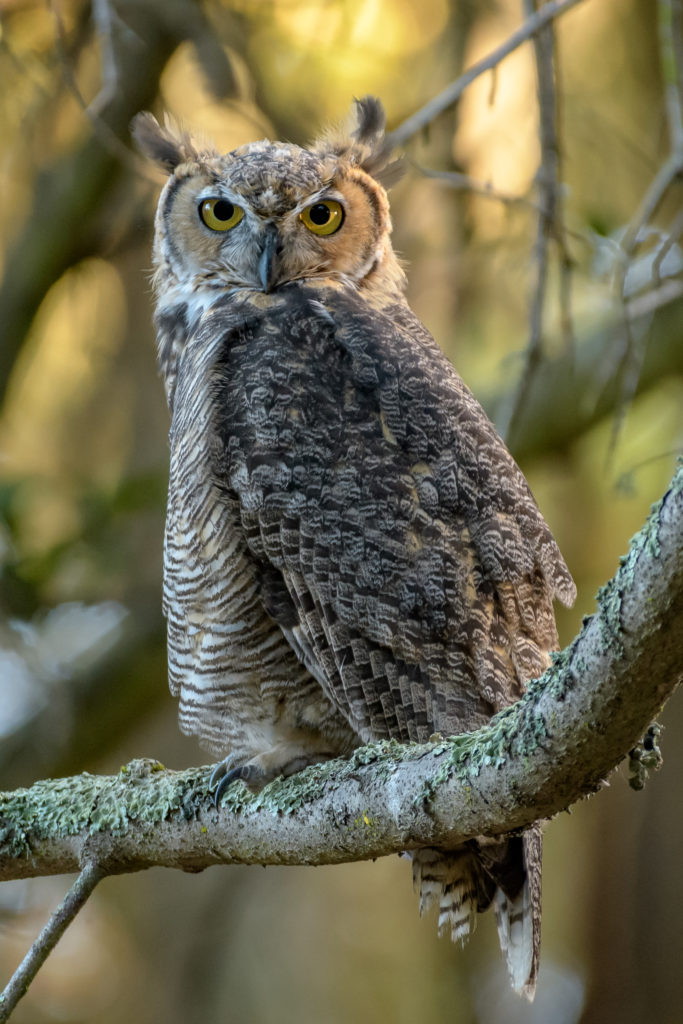
Bubo virginianus
Teacher’s Guide
This guide helps to lead opening and follow-up discussions, and outlines NGSS connections.
Great Horned Owl Adaptations
This guide provides a worksheet and powerpoint with thought provoking questions, facts, visuals, and videos to explore the many adaptations that owls have developed.
Owl Pellet and Food Wed Activity Guide
Use the contents of an owl pellet to explore the concept of food webs and build one of your own with this set of worksheets and guides.
Learn more about our kit and specimen rentals, including a mounted great horned owl.
Learn more about birds with the resources in our Online Museum Store.

